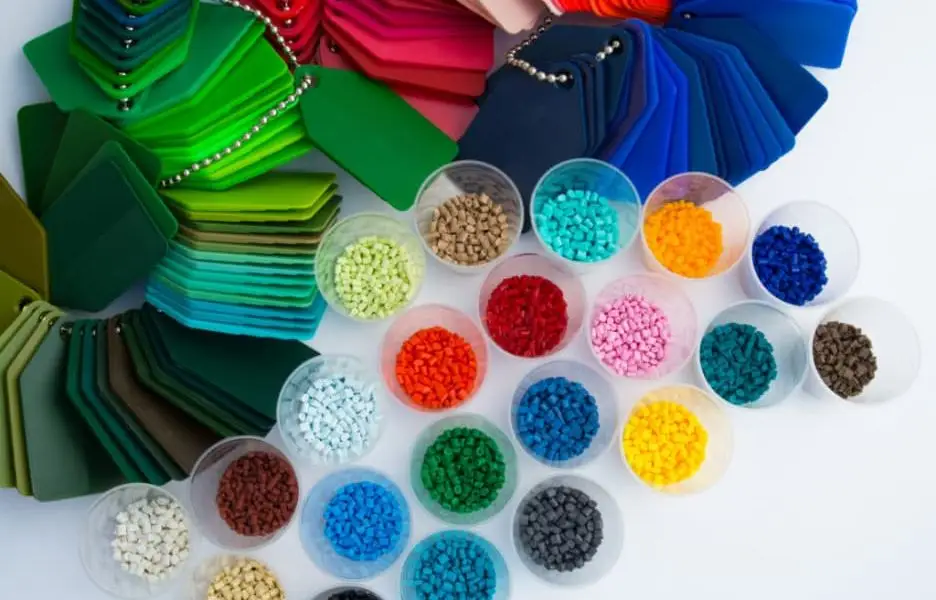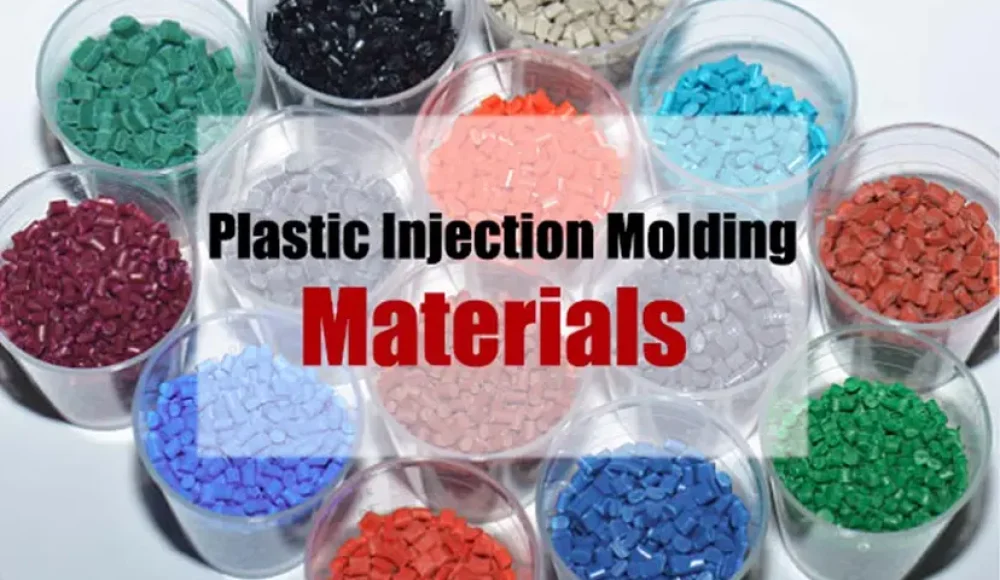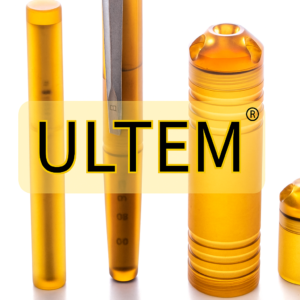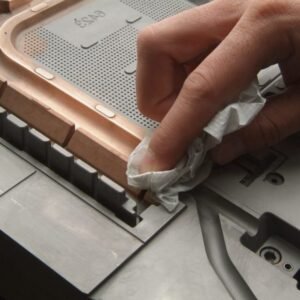Изборът на подходящ материал е една от най-важните стъпки дизайн за леене под налягане. Изборът на термопластична смола определя не само механичната якост и издръжливостта на формованата част, но и нейната технологичност, повърхностно покритие, цена, и дългосрочна надеждност.
Това ръководство предоставя на инженерите и дизайнерите структурирана рамка за количествено оценяване на материали за леене под налягане. Фокусира се върху механичния ключ, топлинна, и химични свойства, които влияят на ефективността, като ви помага да изберете оптималната смола за вашето конкретно приложение.
Въведение

пластмасови материали за леене под налягане
Избор на a термопластична смола за леене под налягане може да бъде сложно инженерно решение. Всяко семейство полимери показва уникални характеристики, които реагират по различен начин на механични натоварвания, температурни вариации, и условия на околната среда. За да направите избор на звук, инженерите трябва да разберат връзката между структура на материала и производителност, както и специфичните изисквания на приложението.
За критични за безопасността, висока производителност, или чувствителни към надеждността компоненти, задълбочен инженерен анализ е задължително. Това включва оценка на стреса, щам, и излагане на околната среда, за да се определи кой материал отговаря на всички оперативни изисквания.
въпреки това, не всеки проект изисква обширна симулация или тестване. Много формовани компоненти работят при меки условия - като стайна температура и ниски натоварвания - където обичайните смоли като ABS, полипропилен (ПП), или поликарбонат (настолен компютър) са повече от достатъчни. За такива случаи, опростени насоки—обхванати по-късно в това ръководство под „Не ме карай да смятам“— може да помогне на неинженерите да вземат практически и рентабилни материални решения.
Защо изборът на материал е важен
Изборът на материал често се превръща в a игра на отгатване когато има липса на разбиране за:
Как вътрешната полимерна структура влияе върху свойствата.
Как ясно да дефинираме изискванията за приложения в реалния свят.
Къде да намерите надеждни и сравними данни за кандидат материали.
Дори малки вариации в състава на смолата или параметрите на обработка могат значително да повлияят якост на опън, стабилност на размерите, или устойчивост на удар. Следователно, информираният избор на материал гарантира постоянно качество, ефективност на разходите, и предвидима производителност през целия жизнен цикъл на продукта.
Сравняване на обичайните материали за леене под налягане
| Тип смола | Основни предимства | Типични приложения | Съображения за проектиране |
| POM (Ацетал) | Твърд, скован, силен, ниско триене, Устойчив на умора | Предавки, помпи, Комплекти, превключватели, копчета | Чувствителен към свиване; трудно се боядисва или покрива |
| PMMA (Акрил) | Отлична яснота, устойчив на драскотина, ниско свиване | Лещи, знаци, светлинни тръби | Чуплив, слаба химическа устойчивост |
| коремни мускули | Твърд, химически устойчиви, размери стабилен, евтин | Електронни корпуси, ръчни устройства, Козметични части | Може да показва плетени линии; дебелите участъци могат да потънат |
| HDPE | Твърд, въздействие- и устойчиви на химикали, лек | Контейнери, играчки, мебели | Голямо свиване, ниска повърхностна енергия |
| настолен компютър (Поликарбонат) | Висока якост, яснота, и устойчивост на въздействие | Лещи, осветление, корпуси, бронирано стъкло | Слаба химическа устойчивост; може да образува мехурчета в дебели части |
| ABS/PC смес | Добър баланс на здравина и обработваемост | Автомобилна, електроника | По-ниска цена от PC; подобрени свойства на формоване |
| ПП (Полипропилен) | Гъвкав, Устойчив на умора, химически устойчиви | Панти, Капки, медицински тръби | Възможно свиване и изкривяване; може да се празни в дебели области |
| PEEK | Устойчивост на високи температури и химикали | Космонавтика, помпи, медицински изделия | Много скъпо; Ultem или PPSU са по-евтини алтернативи |
| PEI (Ultem) | Силен, топлинен устойчив, размери стабилен | медицински, осветление, HVAC компоненти | Скъпо, но по-евтино от PEEK |
| PPSU | Висока устойчивост на топлина и химикали, стерилизируем | Медицински тави, интериор на самолета | Дебелите участъци може да се изпразнят; ограничени цветови опции |
| PA (Найлон) | Висока якост, устойчивост на абразия | Предавки, втулки, структурни части | Абсорбира влагата; може да се изкриви |
| PBT/PET | Отлични електрически и размерни свойства | Уреди, автомобилен, електрически | Склонни към изкривяване при стъклени пълнители |
| LCP | Голям поток, химическа устойчивост, ниско топлинно разширение | Конектори, PCBS | Скъпо, анизотропно свиване |
| PPS | Висока химическа и термична устойчивост | Автомобилна, електрически корпуси | Изисква прецизен контрол на кристализацията |
Относно стандартния лист с данни за материала
А лист с данни за материала осигурява основни механични и термични свойства - обикновено измерени при стайна температура. Докато тези стойности (напр., якост на опън, удължаване, модул на огъване) са важни, те често описват условия на повреда, а не производителност в реалния свят. Следователно инженерите трябва внимателно да тълкуват листовете с данни, като се имат предвид условията на околната среда, Геометрия на част, и очаквани натоварвания.
Повече от 85,000 търговски пластмаси съществуват, групирани в около 45 полимерни семейства. Термопластите доминират в съвременното производство, отчитайки грубо 85% на всяка употреба на пластмаса, докато термореактивните съставляват останалото 15%. Допълнителна информация от доставчици – като ръководства за проектиране и казуси – може да помогне за преодоляване на пропуските в данните за материали от инженерно качество.
Перфектно 👍 Нека продължим и завършим пренаписана и SEO оптимизирана версия на вашата статия – продължаване от мястото, където е спряло („Не ме карай да правя математиката!”) и го завършва със силно, образователен завършек, който отговаря на вашия технически SEO стил на писане.
Не ме карайте да правя математика!
Много диаграми на свойствата на материалите показват съотношения като сила към тегло или коравина към разходите, но в практичен дизайн на мухъл, малко инженери имат време да пресметнат тези числа ръчно. Вместо това, най-добрата практика е да създайте кратък списък с жизнеспособни материали въз основа на механични и термични изисквания, след това сравнете конкретни, свойства от реалния свят (напр., якост на опън при работна температура, скорост на свиване, и поток на стопилка).
Онлайн базите данни за материали и таблиците с данни на доставчиците правят това по-лесно от всякога. Простото филтриране по вашия диапазон на производителност може да стесни стотици смоли до шепа кандидати. След като този кратък списък е готов, вашият формовчик или разпределител на смола може да предостави подробни тестови данни за валидиране и частични изпитания.
Професионален съвет: Винаги тествайте с точно клас смола, който планирате да използвате в производството — дори малки разлики в добавките, съдържание на влага, или формулировките на доставчика могат значително да променят поведението на потока и свиването.
Тестване и валидиране: Никога не пропускайте тази стъпка
Изборът на материал не свършва до листа с данни. След като сте идентифицирали един или двама обещаващи кандидати, тестване на прототип е от съществено значение. Изградете малка пилотна форма, изпълнявайте къси удари, и проверете критичните функции. Това разкрива как тече материалът, запълва, и изкривявания във вашата действителна геометрия на детайла – прозрения, които симулациите не винаги могат да предвидят.
Типичните проверки за валидиране включват:
Размерна точност — Сравнете измерените размери с CAD данни.
Повърхностно покритие — Потвърдете репликацията на текстурата и нивата на гланц.
Механично изпитване — Оценете якостта на опън, въздействие, и производителност при умора.
Устойчивост на околната среда — Тест срещу химикали, UV експозиция, или температурни цикли.
Чрез ранно улавяне на проблеми, свързани с материалите, можете да предотвратите скъпи промени в дизайна или гаранционни искове по-късно.
Партнирайте с вашия експерт по формоване
Дори най-опитните дизайнерски инженери се възползват от сътрудничеството с опитен формовчик по време на избора на материал. Дизайнерите на матрици и инженерите по процеси могат да дадат съвет:
Правилно избор на формована стомана за да съответства на абразивността на смолата или склонността към корозия.
Нуждата от плесенни покрития или съвместимост с гореща бегачка за трудни материали.
Регулиране поставяне на портата, обезвъздушаване, и ъгли на чернова за специфични свойства на течливост на смолата.
Тяхното прозрение в производството често води до по-добра дългосрочна последователност и по-малко предизвикателства при обработката - в крайна сметка спестява време и пари.
Съображения за устойчивост и рециклиране
Днешната производствена среда поставя все по-голям акцент върху устойчивостта. Когато е възможно, помислете рециклирани или био базирани материали. Много доставчици на смола вече предлагат PCR (Рециклиран след употреба) или био-смола версии на стандартни полимери като PP, ДОМАШЕН ЛЮБИМЕЦ, и БКП.
Докато тези устойчиви опции могат леко да променят механичните или цветовите свойства, те помагат за намаляване на въздействието върху околната среда и подкрепят инициативи за по-екологични продукти. Винаги тествайте тези материали при реални условия на обработка, за да осигурите постоянно качество.
Последни мисли
Изборът на правилния материал за леене под налягане е един от най-важните решения в частично проектиране. Избраната от вас смола определя не само здравината и производителността на продукта, но и цена, издръжливост, и технологичност.
Ето кратко резюме, което да ръководи процеса ви:
Определете вашите изисквания — сила, температура, химическо излагане, външен вид, и цена.
Материали в кратък списък които отговарят на обхвата на вашия имот.
Оценете съвместимостта на процеса — свиване, чувствителност към влага, формоване.
Прототип и валидиране преди окончателния избор.
Консултирайте се с вашия леяр за фина настройка на производствените параметри.
Замислен, Подходът, управляван от данни, гарантира, че всеки формован компонент отговаря на целите за ефективност и бюджетните очаквания - основата на надеждността, повторяемо производство.
Вътрешни предложения за свързване (за WordPress)
Ръководство за леене под налягане от найлон
Ръководство за проектиране на ъгъл на проект
13 Видове повърхностни покрития при леене под налягане
Ръководство за проектиране на пластмасови ребра




1 мисъл за "Ръководство за избор на материал за леене под налягане”